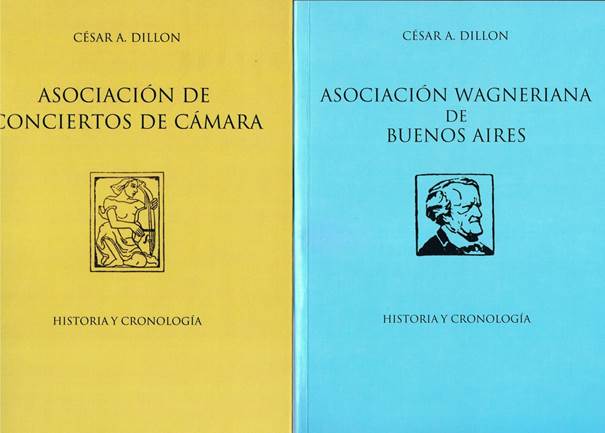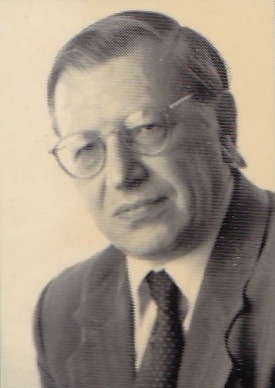
IN MEMORIAM CESAR DILLON (Buenos Aires 18 December 1939 – Buenos Aires 9 November 2013)
An appreciation by Charles Mintzer

The world of opera performing history suffered a great loss with the news of the death in Buenos Aires last Saturday of the great opera chronologer and historian César Dillon.
César’s books about the history of opera in Buenos Aires and in Argentina were scrupulously researched and beautifully produced. And he was working on several other ambitious projects at the time of his death. His review published on our website of the massive history/chronology of Victoria de los Angeles was, it would appear, his last effort, and his first in English. César adored de los Angeles and his long review cataloging several typos and errors may leave the wrong impression. He was a stickler for accuracy and he only cited the errors, not the facts. He wanted the work of this beloved Spanish artist to be even more perfect.
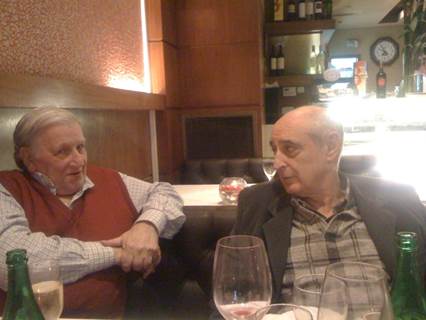 (César Dillon on the left with his Barcelona based friend Jorge Binaghi on 30 September 2013 photo taken by Mr. Benarroch)
(César Dillon on the left with his Barcelona based friend Jorge Binaghi on 30 September 2013 photo taken by Mr. Benarroch)
Opera in Argentina, indeed, in South America, is extremely important, because of the reverse seasons, Summer in Italy was Winter in Argentina. After the opera houses in Italy closed in May or June many of the top singers boarded ships and embarked for South America. Although Brazil and Uruguay had important seasons, the top destination for most operatic enterprises was Argentina, with Buenos Aires the star in the constellation. Italian opera can be said to have its greatest amalgam of stars in the storied history of great opera houses of Argentina and to a lesser extent Brazil (remember, Toscanini was the cellist in an touring opera orchestra in Brazil when he first lifted a baton, in “Aida” with Medea Mei (later, Figner) the Amneris.) South America also enjoyed important German and French opera seasons, but the Italian seasons were the most prominent.
I had seen mentions of César Dillon in articles in “The Record Collector” over the years, and the late Tom Kaufman gave me his email address. I had noticed in his history of the Coliseo (the other theatre in Buenos Aires that occasionally gave star-studded seasons) that in 1921 he had Rosa Raisa singing Norma only five times, not the seven I had read about in accounts of the season. He told me that she cancelled two “Norma”s due to illness, and the opera was changed to “Mignon” in order to have a starring role for Gabriella Besanzoni, the Adalgisa in the advertised “Norma”s. Since Raisa enjoyed five great seasons in the Argentine capital, I asked him to check my chronology and he found it essentially correct, and gave me the dates of a few concerts she gave for the benefit of the Hospital Israelita which had named a wing for her. His history/chronology of the Coliseo and the Teatro Marconi are among the very best opera house history books to cross my collecting eye.
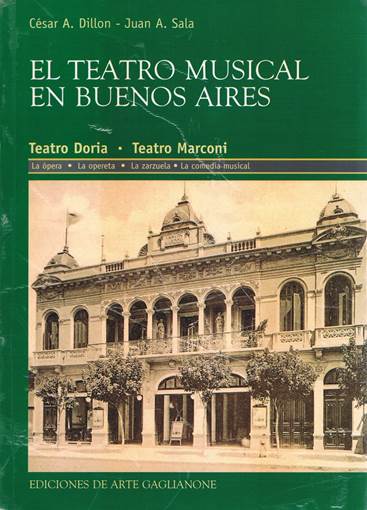
(César Dillon, Stella de Sabata -granddaughter of the famous conductor- and Fabian Persic in October2013)
In 2007 I had the opportunity of visiting Buenos Aires, one of the highlights of my travelling career. Although still suffering the aftershocks of the 2001 economic crisis the city was vibrant and gorgeous, and on the very first day I took the tour of the Colón. What a thrill to visit this glorious opera house and to contemplate the great history played out on its magnificent stage and large auditorium. César was kind enough to secure second row orchestra tickets for “Il Barbiere di Siviglia” for us, and would not hear of our paying him. It was only a so-so performance. The great days of the Cólon were in the past he ruefully told us. He hosted a dinner party for us at his spacious apartment in the Recoleta district where his guests were Adolfo Cogorno (now deceased) who was a close friend of Régine Crespin and in whose home she stayed in her last visits to BA. Also present was Jorge Binaghi, a very great friend of Victoria de los Angeles who was one of the very last people to see her before her death. César was a prominent attorney in BA and enjoyed a very comfortable life. His vast library was one of the very best, almost as complete with singer biographies and opera house histories of any that I have seen, the others being the late Richard Bebb in London and the late Tom Kaufman in Baltimore, and I presume the late Roger Gross, but I never saw his collection but heard about it. I believe his published histories of the Teatro Marconi and the Teatro Coliseo were leading up to the definitive history of the Teatro Cólon and its predecessors, that is of international opera on the very highest level.
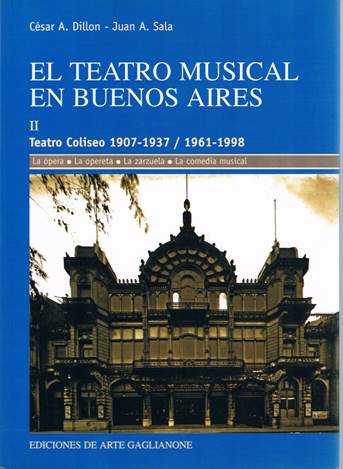
I told César that I was very impressed with the plaque in the lobby of the Cólon paying tribute to the great Claudia Muzio, and although there were other plaques these were not representative of the theatre’s rich history. He told me he was head of the BA Claudia Muzio Society that gave the plaque to the theatre. Muzio of course, enjoyed her greatest career success in BA, and it was my pleasure, a few years after my visit to that city, to put the late Andy Karzas in touch with César when he was escorting a tour group to that city. Andy was the custodian of the memorabilia and scrapbooks of May Higgins, Muzio’s faithful secretary. I learned that Cesar was prominent in the effort to restore to its original glory the monument to Conchita Supervia designed by Edwin Lutyens in the Liberal Jewish Cemetery (Willesden) in London. Supervia's last husband was Ben Rubenstein. The entry on the "Find a Grave" website says: "She was buried with her baby daughter, in a grave designed by Edwin Lutyens. The grave, which had fallen into disrepair, was refurbished by a group of admirers and re-consecrated in October 2006."
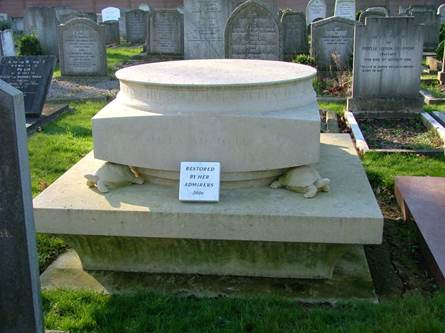
Of the current singers César was a huge admirer of Plácido Domingo, and often planned his travels to Europe and the US to coincide with Domingo's role assumptions. He visited the US about five years ago to see Juan Diego Florez in “La Fille de Regiment” at the Met and then go to Washington DC to hear Domingo in a rare Handel opera, “Tamerlano.” Domingo was at that time rehearsing “The First Emperor” at the Met, and when César visited the Met archives I gave him a little backstage tour, and we happened upon Domingo in rehearsal in the C level orchestra room. I gathered my nerve, and at an appropriate break in the rehearsal engineered an introduction of César and Plácido. They enjoyed a lively conversation in Spanish.
César was a friend of Operanostalgia and he very often alerted us to breaking news about deaths of singers about which we may not have known. His boundless energy, enthusiasm, and kindnesses were deeply appreciated and his loss to this small segment of the opera world will be missed.
Charles Mintzer
